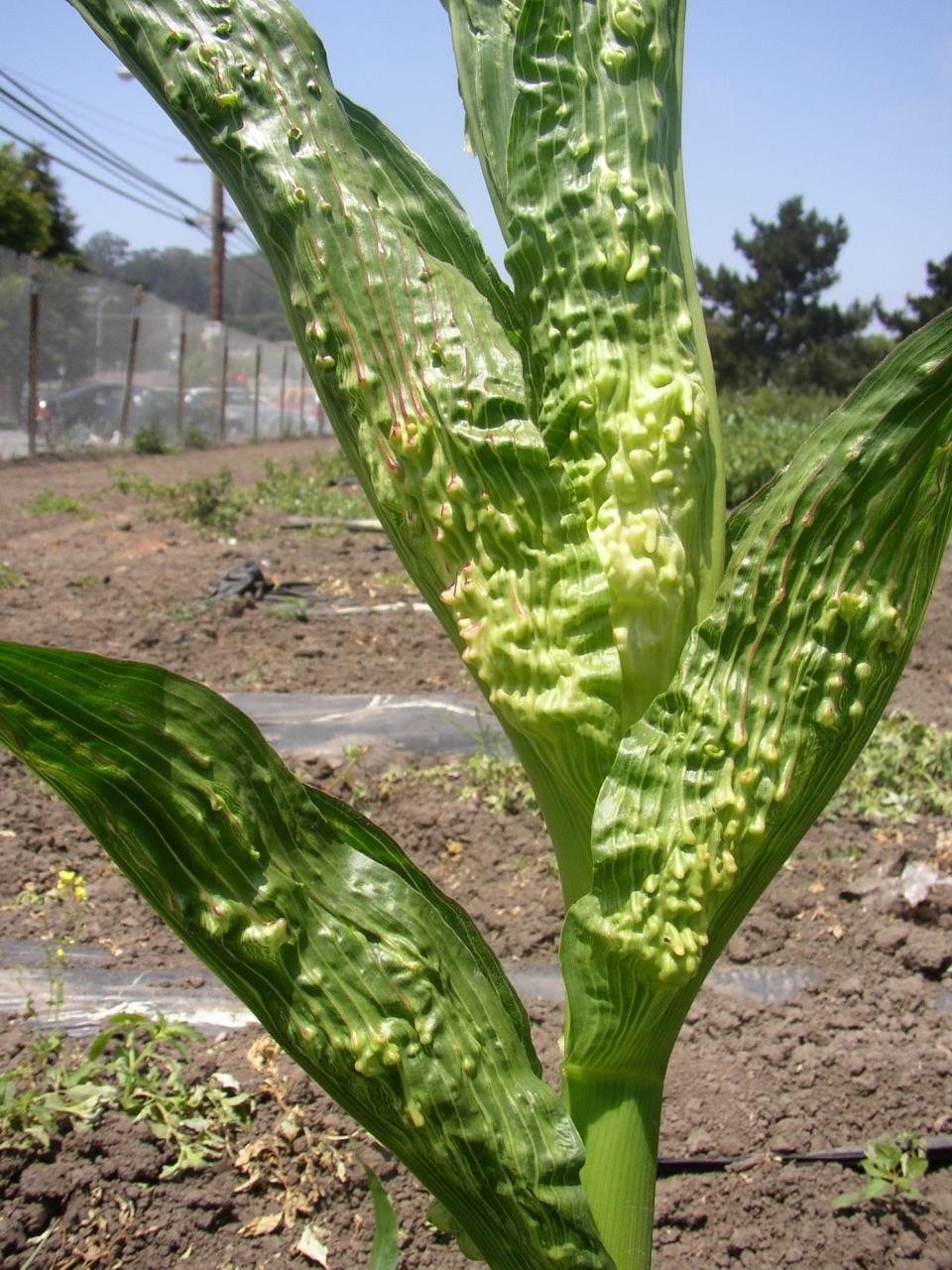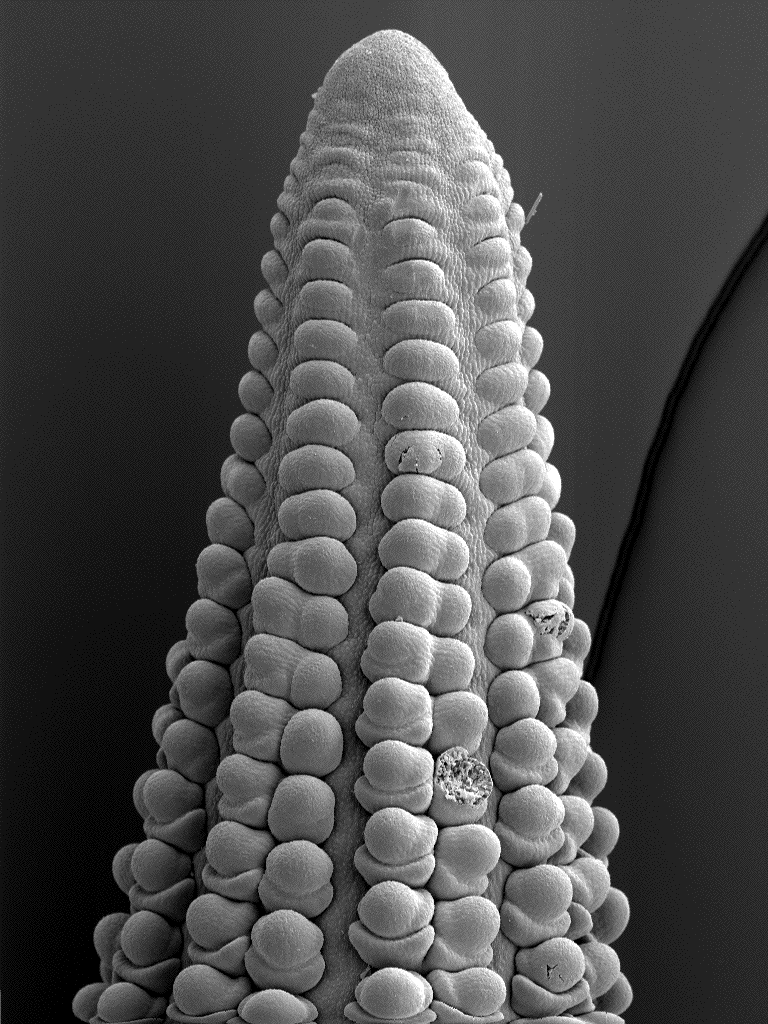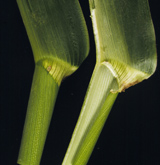University of California, Berkeley | Plant & Microbial Biology
SHake

- Principal Investigator
Our laboratory uses genetics to study plant development. We are interested in identifiying the genes that control plant architecture and determining their mechanism of action. Plant architecture results from activities of meristems, thus our lab has a strong focus on the regulation of meristem activity. We characterize mutants that are affected in vegetative and/or inflorescence shoot meristems. The genes are identified through positional cloning and studied using a battery of molecular techniques. Maize is our model organism, but we often study a gene or trait in other grasses such as Brachypodium and Setaria. The laboratory research falls into three categories: 1) understanding the role and regulation of knotted1-like (knox) homeodomain transcription factors, 2) identifying genes that regulate inflorescence architecture in maize and the impacts of drought on inflorescence meristems, 3) determining the cellular signaling mechanisms that pattern a maize leaf.
Educational Background:
The role of knox genes in maize and other species
Knotted1-like homeobox (knox) genes are expressed in meristems and are specifically down-regulated as leaf primordia initiate. Dominant mutants exist in maize that misexpress knox genes in leaves, leading to striking proximal-distal defects. Recessive knox mutants in maize, rice and Arabidopsis fail to elaborate a shoot, thus revealing a function for knox genes in the meristem. We have identified the targets of KNOTTED1 in maize and are carrying out similar experiments in rice and sorghum. Most of the hormone pathways are regulated by KN1. The present goal is to determine which targets are most critical in the meristem and which targets are involved in the leaf patterning defect. We are also seeking to understand the chromatin context of KN1 regulation.

A dominant Knotted1 mutant that results from a transposon insertion in the intron. The normally smooth leaves have bumps (knots) that result from blade cells adopting sheath fate.
Inflorescence architecture in maize and other grasses
Nearly all grasses are characterized by the spikelet, a short branch that contains floral meristems. The diversity in the grasses reflects variation in the organization of spikelets that ultimately originates from activities of meristems. With NSF support, we identified many of the genes that regulate inflorescence architecture in maize. These genes are defined by their mutant phenotypes. Our goal now is to ask how drought affects expression of these master regulatory genes and to identify genes that are responsible for the natural diversity in maize inflorescence architecture.

A scanning electron micrograph of an ear primordia showing rows of spikelet meristems, each of which will develop into a kernel.
Positional signaling in maize leaf development
The maize leaf offers a unique opportunity to study how cells respond to their position and differentiate accordingly. The proximal part of the maize leaf is the sheath, a tissue that wraps around the culm. The distal part of the leaf is the blade, which lays flat to optimize photosynthesis. At the junction of the sheath and blade is the ligule region. In addition to this major proximal-distal axis, the abaxial-adaxial and medial-lateral axes are also defined by distinct cell types and tissue organization. How these axes are established and coordinated is not known. We are using maize mutants to identify the genes that regulate this coordinate system.

The front (abaxial surface) and back (adaxial surface) of a maize leaf.
Tsuda, K. Kurata, N. Ohyanagi, H. and Hake, S. (2014) Genome-Wide Study of KNOX Regulatory Network Reveals Brassinosteroid Catabolic Genes Important for Shoot Meristem Function in Rice. Plant Cell 26:3488-500.
Lewis MW, Bolduc N, Hake K, Htike Y, Hay A, Candela H, Hake S. (2014) Gene regulatory interactions at lateral organ boundaries in maize. Gene regulatory interactions at lateral organ boundaries in maize. Development 141:4590-7.
Thompson BE, Basham C, Hammond R, Ding Q, Kakrana A, Lee TF, Simon SA, Meeley, R, Meyers, BC and Hake, S. (2014) The dicerlike-1 homologue, fuzzy tassel, is required for the regulation of meristem determinacy in the inflorescence and vegetative growth in maize. Plant Cell Dec 2.
Eveland, A.L., Goldshmidt, A., Pautler, M., Morohashi, K., Liseron-Monfils, C., MW, L., Kumari S, Hiraga S, Yang F, Unger-Wallace E, Olson A, Hake S, Vollbrecht E, Grotewold E, Ware D, and Jackson, D. (2014). Regulatory modules controlling maize inflorescence architecture. Genome Res.24:431-43.
Bolduc, N. Tyers, R. Freeling, M. Hake, S. (2014) Unequal redundancies in KNOX genes. Plant Physiology 164: 229-38
O'Connor, D. L., Runions, A., Sluis, A., Bragg, J., Vogel, J. Prusinkiewicz, P. Hake, S. A Division in PIN-Mediated Auxin Patterning During Organ Initiation in Grasses (2014) Plos Computational Biology Jan 30, 2014.
Moon, J. Candela, H. and Hake, S. 2012. The Liguleless narrow mutation affects proximal-distal signaling and leaf growth. Development 140: 405-412.
Bolduc, N., Yilmaz, A., Mejia-Guerra, M.K., Morohashi, K., O'Connor, D., Grotewold, E., and Hake, S. 2012. Unraveling the KNOTTED1 regulatory network in maize meristems Genes & Development 26: 1685-1690.
Chuck, G., Tobias, C., Sun, L., Kraemer, F., Li, C., Dibble, D., Arora, R., Bragg, J. N., Vogel, J. P., Singh, S., Simmons, B., Pauly, M., Hake, S. (2011) Overexpression of the maize Corngrass1 microRNA prevents flowering, improves digestibility and increases starch content of switchgrass PNAS 108:17550-17555.
Johnston, R., Candela, H., Hake, S. Foster, T. (2010) The maize milkweed pod1 mutant reveals a mechanism to modify organ morphology. Genesis 48:416-423.
Chuck, G. Whipple, C., Jackson, D. and Hake, S. (2010) The maize SBP-box transcription factor encoded by tasselsheath4 regulates bract development and establishment of meristem boundaries. Development 137:1243-1250
Ramirez, J. Bolduc, N., Lisch, D., and Hake, S. (2009) Distal expression of knotted1 in maize leaves leads to re-establishment of proximal/distal patterning and leaf dissection. Plant Physiology 151:1878-88.
Thompson, B., Bartling, L., Whipple, C., Hall, D. Schmidt, R, and Hake, S. (2009) bearded-ear encodes a MADS-box transcription factor that controls floral meristem identity and determinacy in maize. Plant Cell 21:2578-90.
Bolduc, N. and Hake, S. (2009) The maize transcription factor KNOTTED1 directly regulates the gibberellin catabolism gene ga2ox1. Plant Cell 21:1647-58.
Chuck G, Meeley R, Hake S. (2008) Floral meristem initiation and meristem cell fate are regulated by the maize AP2 genes ids1 and sid1. Development 135:3013-9.
Candela, H. Johnston, R., Gerhold, A., Foster, T. and Hake, S. (2008) The milkweed pod1 gene encodes a KANADI protein that is required for abaxial-adaxial patterning in maize leaves. Plant Cell 20: 2073-2087.
Magnani, E. and Hake, S. (2008) KNOX lost the OX: The Arabidopsis KNATM gene defines a novel class of KNOX transcriptional regulators missing the homeodomain. Plant Cell 20: 875-887.
Chuck, G. Meeley, R. Irish, E., Sakai, H. Hake, S. (2007) The tasselseed4 microRNA of maize controls meristem cell fate and sex determination by targeting the indeterminate spikelet1/Tasselseed6 gene. Nature Genetics 12:1517-1521 PDF 448k
McSteen, P., Malcomber, S. Skirpan, A., Lunde, C., Wu, X., Kellogg, E. and Hake, S. (2007) barren inflorescence2 encodes a co-ortholog of the PINOID serine/threonine kinase and is required for organogenesis during inflorescence and vegetative development in maize. Plant Phys. 144:100-11.
Chuck, G, Cigan, M., Saeteurn, K. Hake, S. (2007) The heterochronic maize mutant Corngrass1 results from overexpression of a tandem microRNA. Nature Genetics, 39:544-549. PDF 448k
Bortiri, E., Chuck, G., Vollbrecht, E., Rocheford, T., Martienssen, R., Hake, S. ramosa2 encodes a LATERAL ORGAN BOUNDARY domain protein that determines the fate of stem cells in branch meristems of maize. Plant Cell. 2006 Mar;18(3):574-85. PDF 448k
Bommert, P., Lunde, C., Nardmann, J., Vollbrecht, E., Running, M., Jackson, D., Hake, S. and Werr, W. (2005) thick tassel dwarf1 encodes a putative maize orthologue of the Arabidopsis CLAVATA1 leucine-rich repeat receptor-like kinase. Development 132:1235-1245.
Hake, S. Smith, H. M. S., Magnani, E., Holtan, H., Mele, G., and Ramirez, J. (2004) The role of knox genes in plant development. Annual Review of Cell and Developmental Biology. 20:125-151
Magnani E, Sjolander K, Hake S. (2004) From endonucleases to transcription factors: evolution of the AP2 DNA binding domain in plants. Plant Cell 16:2265-77.
Member - ARS Hall of Science - 2013
ARS Senior Scientist of the Year - 2011
Fellow - American Association for the Advancement of Science - 2009
Member - National Academy of Sciences - 2009
Stephen Hales Prize - American Society of Plant Biology - 2008
Jeanette Siron Pelton Award - Botanical Society of America - 1996
